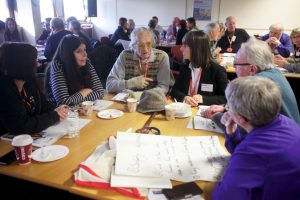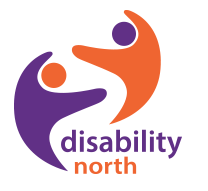There are currently almost 14 million people in the UK with some form of disability. Many of these people have ‘hidden disabilities’ such as a stoma, urinary or bowel incontinence, autism or a visual impairment. With an ageing population, there are also increasing numbers of people living with dementia.
However, as the number of people with disabilities has grown, the number of public toilets has decreased. Over the last twenty years, cash strapped local councils across the UK have closed hundreds of toilets in order to save money. They can do this because there is no statutory requirement on them to provide public toilets. The lack of appropriate accessible toilets can prevent many people with disabilities and their carers from going out, increasing social isolation and loneliness.
The Nowhere to Go project, which aims to improve the accessibility and availability of public and customer toilets, began as a student project at Newcastle University in collaboration with Carers Northumberland. Drawing on the experiences of people with disabilities and their carers in Northumberland and working with a number of North East organisations, including Disability North, the Nowhere to Go team have produced a toilet accessibility guide: How to Improve The Accessibility of Public and Customer Toilets – Easy, Low Cost Ways to Make A Big Difference to People’s Lives.

In the guide, we highlight some simple and often inexpensive ways to make toilets that are already available for customer or public use more accessible. For example, better signs can make life much easier for people with dementia, those who are partially sighted, or who have learning difficulties. People with dementia and learning difficulties find it easier to understand standard symbols. One of the participants in our research, Leanne, who has learning difficulties, told us that it was easy to walk into the men’s toilet by mistake when the signs were not clear. Another participant, Iain, who is partially sighted, talked about the importance of having large signs with clear writing and with good colour contrasts and clear borders.
Another simple way of improving access is to provide some staff training. Many people, particularly those who might need to use a toilet urgently because they have urinary incontinence or a stoma can find it embarrassing to ask to use a toilet. Providing good signs and information can reduce the need to ask questions, but in addition, raising awareness of the importance of access to toilets through good training can help to ensure staff deal with customer toilet requests discreetly and helpfully, and treat people with dignity. Staff training can also help to promote awareness that “not every disability is visible” so that people are not made to explain why they need to use the accessible toilet. It can also help to ensure that accessible toilets remain clutter-free and aren’t used for storage.
The guide includes a handy ‘Twenty Top Tips’ section with simple and practical advice. There is also an opportunity to hear the voices of some of the people we spoke to during our research – their stories appear throughout the guide, and can also be accessed in this short film Nowhere to Go Video.
In the guide, we talk about the importance of community toilet schemes, which can ensure greater availability of toilets people can use in local communities. We also recommend local authorities and commercial and voluntary sector organisations work in partnership to create local toilet strategies to tackle the problems that have been created by the closure of public toilets. Finally, the guide also explains why more specialist accessible toilets called Changing Places are essential for people with multiple or profound physical or learning disabilities and their families and carers. It would be great to see new commercial and public developments and existing large organisations consider providing more of these vital facilities. For information there are currently 10 Changing Places Toilets in Newcastle.
To find out more, please visit our website Nowhere to Go, which provides lots of useful links to other resources, websites and information, as well as copies of previous reports from the Nowhere to Go Team. But most importantly, the website is where you will find copies of the guide (and a shorter leaflet). The guide is free to download in a range of accessible formats including large print, screen reader and audio, and it is available in braille on request. We can also supply free paper copies of the guide and leaflet in the different formats, just get in touch.
We hope the guide will be shared widely and that it will encourage businesses and individuals in our local communities to make improvements to their toilet provision, however small. Small changes can still make a BIG difference to people with disabilities and their carers.
2nd October 2019. Blog provided by Professor Janice McLaughlin (Professor of Sociology in The School of Geography, Politics and Sociology at Newcastle University).

